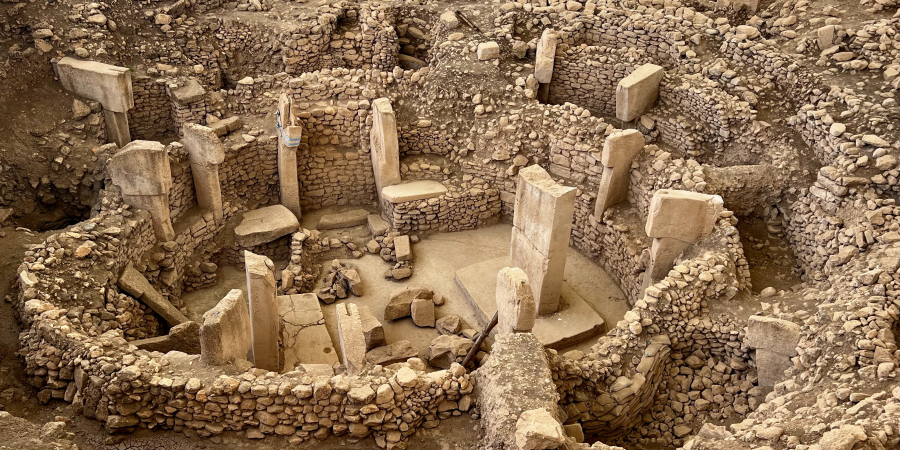

One of the most astounding archaeological finds of our time, discovered by Klaus Schmidt six miles from the ancient city of Urfa in southeast Turkey, consists of enormous engraved stones that date back approximately 11,000 years. These stones were skillfully organized by prehistoric humans who had not yet created metal tools or even pottery. The megaliths are about 6,000 years older than Stonehenge. Gobekli Tepe is the location, and Schmidt, a German archaeologist who has worked here for over ten years, is certain that this is the location of the oldest temple in the world.
"Guten Morgen," he greets me as his van arrives at my Urfa hotel at 5:20 a.m. After thirty minutes, the van pulls up beside some barbed wire at the base of a grassy slope. We adhere to
Schmidt gestures at the enormous stone rings, one measuring 65 feet in diameter. "This is the first human-built holy place," he continues.
We have a 360-degree view of the valley from our vantage point, which is 1,000 feet above the ground. Schmidt, fifty-three, invites me to picture the scene 11,000 years ago, before generations of intensive farming and settlement transformed it into the almost featureless brown wasteland of today.
The landscape that prehistoric humans saw would have included herds of gazelles and other wild creatures, undulating fields of wild barley and wild wheat varieties like emmer and einkorn, gently flowing rivers that drew migratory geese and ducks, fruit and nut trees, and more. According to Schmidt, a member of the German Archaeological Institute, "this area was like a paradise." Gobekli Tepe, in fact, would have drawn hunter-gatherers from Africa and the Levant because of its location at the northern end of the Fertile Crescent, an arc of temperate temperature and agricultural land that stretches from the Persian Gulf to modern-day Lebanon, Israel, Jordan, and Egypt. And in part because he hasn't discovered any proof that humans lived there permanently, Schmidt thinks this was a site of worship on an unparalleledAs the sun rises higher in the sky, Schmidt dons a white scarf in a turban to cover his balding head and skillfully navigates down the hillside among the artifacts. He says in rapid-fire German that he has used geomagnetic measurements and ground-penetrating radar to map the entire peak, showing where at least sixteen more megalith rings are buried over a 22-acre area. Not quite five percent of the property is taken up by the one-acre excavation. He claims that even after fifty years of excavation, archaeologists would hardly be able to touch the surface.
